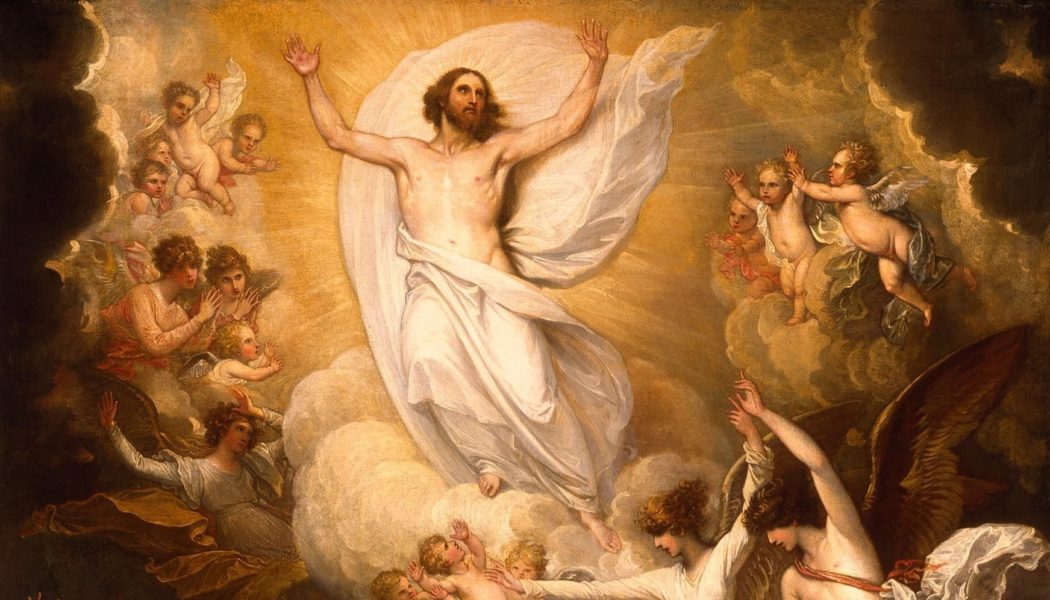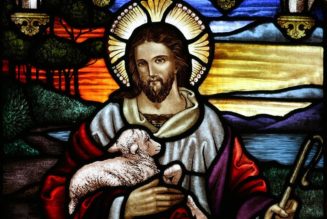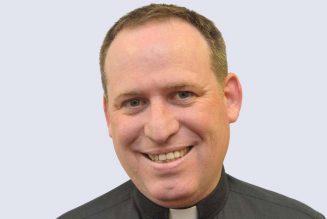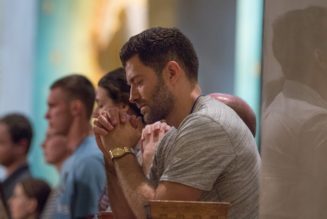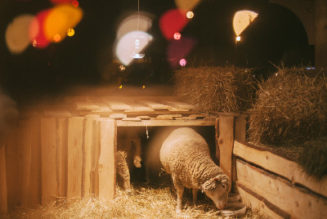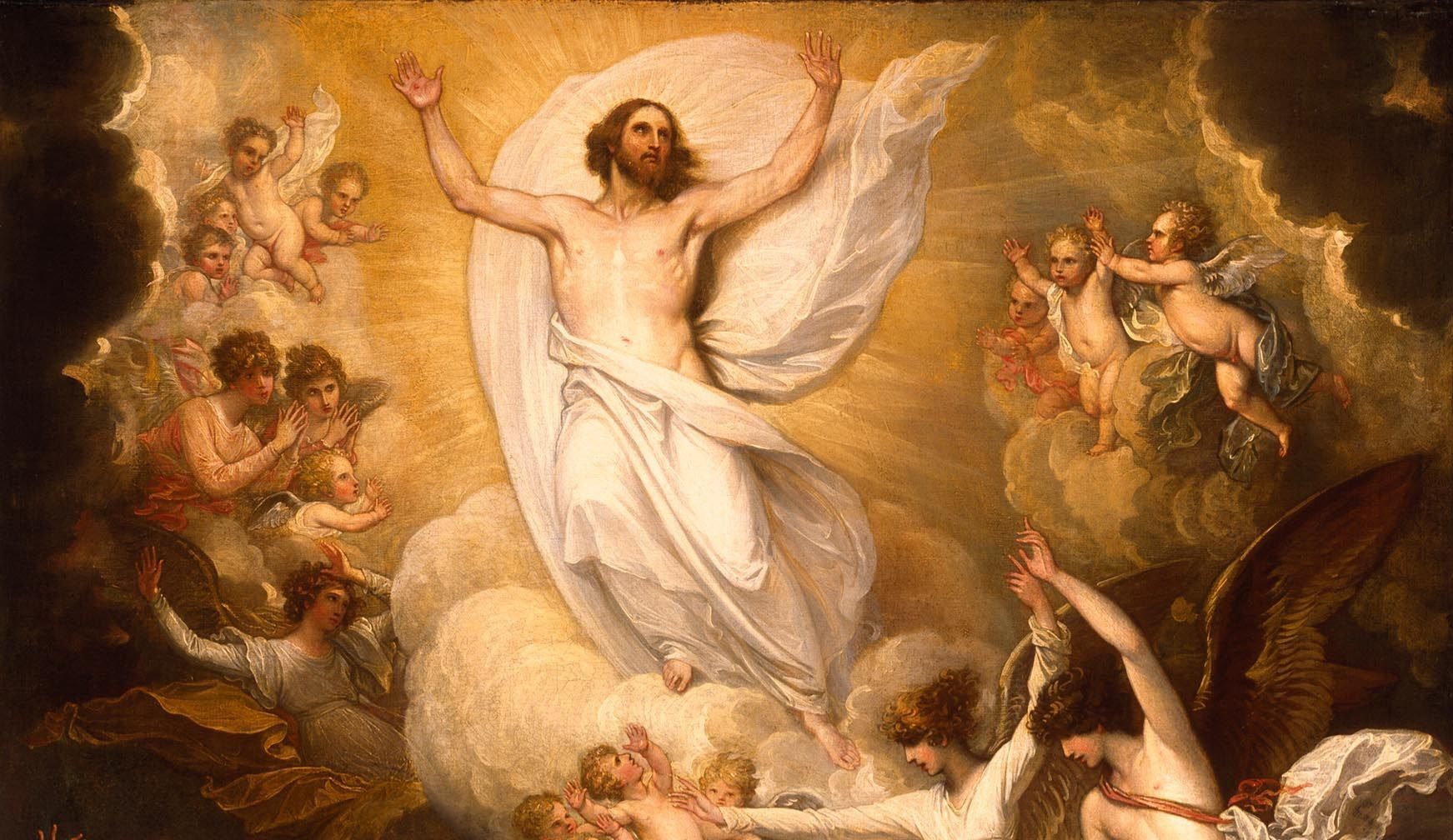
Let God arise, let his enemies be scattered;
let those who hate him flee before him! …
But let the righteous be joyful;
let them exult before God;
let them be jubilant with joy!
Sing to God, sing praises to his name;
lift up a song to him who rides upon the clouds;
his name is the Lord, exult before him!
–Psalm 68:1, 3–4, Prayed at the Office of Readings on the Ascension
The solemnity of the Ascension comes 40 days after the “main event” of Easter. This might be why it has the sense of being somewhat of an afterthought to the Paschal Mystery. In addition, in the Church’s post-Vatican II liturgical calendar, the Ascension has been reduced from its status of an octave to a single day, which might also have caused the faithful’s appreciation of it to wane a bit. Then there is the fact that it has been transferred in many places from being celebrated on the 40th day of Easter, Ascension Thursday, to the Seventh Sunday of Easter, reducing its status to “just another Sunday” to many. Nonetheless, the Ascension remains one of the four constitutive parts of the Paschal Mystery, along with Jesus’ suffering, death, and resurrection.
The letter of the Hebrews (an excerpt of which may be used as the second reading for the Mass on the Ascension) explains how Jesus’ return to his heavenly Father is an integral part of the Paschal Mystery. In the Old Testament, the Chosen People’s high priest had to offer bulls and goats each year on the altar of the Temple. But each of these—the high priest, the animals, the altar, and the Temple—were mere shadows and anticipations of Christ, the true High Priest, his Body and Blood the true offering, the true altar which is the Cross, and heaven the true sanctuary. As the reading explains, “Christ has entered, not into a sanctuary made with hands, a copy of the true one, but into heaven itself, now to appear in the presence of God on our behalf” (Hebrews 9:24). His offering is “once for all” (Hebrews 9:12). For this reason, he is called the “great priest over the house of God” (Hebrews 10:21). The ascension of Jesus “above the highest heavens” (Entrance antiphon) concludes his sacrifice, represents its acceptance by the Father, and completes the construction of the paschal bridge from earth to heaven.
The Ascension opens the way for us to follow Jesus. As the same passage from the letter to the Hebrews explains, “we have confidence to enter the sanctuary by the blood of Jesus, by the new and living way which he opened for us through the curtain, that is, through his flesh” (10:19–20; emphasis added). The liturgy for this solemnity tells us that if we are members of his body, the Church, then we can—indeed, must—follow where the head leads us, just as our own head and body travel and arrive together. The preface for the Mass during the Eucharistic prayer recalls that Christ “ascended, not to distance himself from our lowly state but that we, his members, might be confident of following where he, our Head and Founder, has gone before.” The patristic text from the Office of Readings of the day comes from a St. Augustine homily for the same feast. Its main point is an ecclesial one: “the body as a unity cannot be separated from the head.” Indeed, as we hear in the Eucharistic prayer, we even hear how we share a place at the Father’s right hand: “your Only Begotten Son, our Lord, placed at the right hand of your glory our weak human nature, which he had united to himself.”
The Ascension of Our Lord, then, celebrates not only the completion of Christ’s Paschal Mystery, but also the opening of heaven’s gates to those joined to him in Baptism. As the third-century theologian Origen put it, “The divine Word promises much greater and more lofty things to you who have passed through Jordan’s stream by the sacrament of baptism: he promises you a passage even through the sky” (Office of Readings for Wednesday of the Tenth Week in Ordinary Time). Likewise, St. Leo the Great, writing in the fifth century, imagines what the apostles themselves thought as they witnessed Christ’s ascension: “[T]hat blessed company had a great and inexpressible cause for joy when it saw man’s nature rising above the dignity of the whole heavenly creation, above the ranks of angels, above the exalted status of archangels. Nor would there be any limit to its upward course until humanity was admitted to a seat at the right hand of the eternal Father, to be enthroned at last in the glory of him to whose nature it was wedded in the person of the Son” (Office of Readings for Wednesday, Easter Week VI).
The Solemnity of the Ascension celebrates the great possibilities that lie ahead of us. But we know, too, that this same gift of godliness described by St. Leo—what the Church calls “divinization”—is not one we must wait to open but are to live today. As Pope Benedict describes it, living the divine life is not only “life after death, in contrast to this present life, which is transient and not eternal. ‘Eternal life’ is life itself, real life, which can also be lived in the present age and is no longer challenged by physical death” (Benedict XVI, Jesus of Nazareth: Holy Week (San Francisco: Ignatius, 2011), 82–83). As Christ arises, then, riding that highway in the clouds (see Psalm 68), we should strive to ride along with him, for the Solemnity of the Ascension is another marker on our road to eternity.
The above entry appears in Ascension’s book Solemnities: Celebrating a Tapestry of Divine Beauty, by Christopher Carstens, Denis McNamara, and Alexis Kutarna. Featuring each of the 17 annual solemnities, Solemnities: Celebrating a Tapestry of Divine Beauty examines the theological, spiritual, and liturgical foundations for each celebration; explains the beauty of the solemnity by a commentary on artistic illustration of the celebration; and offers ideas for living the solemnity in one’s daily life. Solemnities: Celebrating a Tapestry of Divine Beauty was awarded Second Place in the “Pastoral Ministry—Parish Life” category by the Catholic Media Association in 2023. See more about the book at https://ascensionpress.com/products/solemnities-celebrating-a-tapestry-of-divine-beauty.
Image Source: AB/WikiArt. The Ascension, cropped (1801), by Benjamin West
